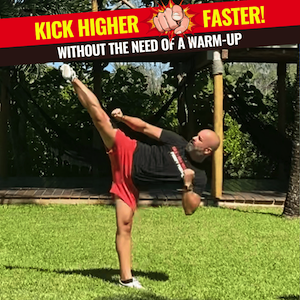As you push your body to new limits in your 40s and beyond, incorporating injury prevention strategies into your training is vital to maintaining peak athletic performance while minimizing the risk of overuse and acute injuries. You'll need to assess your individual athletic needs, taking into account your previous injury history, and monitor your strength, flexibility, and endurance metrics. By balancing intensity and volume, you can reduce your injury risk and optimize your training. To get the most out of your training while staying safe, it's important to understand the intricacies of injury prevention – and that's where the real journey begins.
Understanding Injury Risk Factors
As you hit the trails, understanding the injury risk factors associated with trail running becomes essential, especially if you're over 40. Your body's physiological responses to training loads change with age, increasing your injury risk.
Overuse injuries account for more than 70% of cases, with lower leg injuries like patellofemoral pain syndrome and Achilles tendinopathy being common among trail runners. Acute injuries, such as muscle pain and ankle sprains, also pose a significant threat, making up approximately 36.5% and 25% of all acute injuries, respectively.
To mitigate injury risk, it's vital to focus on injury prevention strategies. Regular assessment of your strength, flexibility, and proper training techniques can help identify areas for improvement.
As an athlete over 40, you need to be mindful of your body's limitations and adjust your training loads accordingly. Don't push yourself too hard, too fast, as this can lead to overuse injuries.
Assessing Individual Athletic Needs
Your unique athletic needs play an essential role in preventing injuries as a trail runner over 40. To assess these needs, you'll need to take into account your injury history, as previous injuries can increase your risk of future ones.
Take note of any areas that have been problematic in the past and adjust your training programs accordingly.
Utilize performance metrics like strength, flexibility, and endurance to identify areas for improvement. This will help you tailor your training to address specific weaknesses and enhance your overall athletic performance.
Regular movement assessments can also identify faulty movement patterns that may predispose you to injuries. Make adjustments to your form and technique to prevent these issues.
Monitor your training loads using methods like session-RPE to verify you're not over- or under-training. This balance is vital for preventing injuries.
Finally, incorporate age-appropriate resistance training guidelines into your routine, such as 1-3 sets of 6-15 reps. This will help you build strength safely while minimizing your risk of injury.
Balancing Intensity and Volume

Balancing intensity and volume is the next critical step in preventing injuries as a trail runner over 40. You need to find the sweet spot where you're challenging yourself without overdoing it. Research shows a U-shaped relationship between training load and injury risk, meaning both under-training and over-training can lead to increased injury rates.
To avoid overuse injuries, limit your weekly training volume increases to 10%. This allows your body to adapt without excessive stress.
To balance intensity and volume safely, monitor both internal and external loads. External loads include distance run and weight lifted, while internal loads are measured by heart rate and perceived exertion. By tracking these metrics, you can tailor your training program to your individual needs.
Aim for a training load ratio of 0.99 or lower between acute and chronic workloads, which is associated with a considerably reduced likelihood of injury (4% risk). Incorporate rest intervals into your training sessions to prevent fatigue, a key factor contributing to injury risk.
Incorporating Injury Prevention Strategies
Prevention is key when it comes to injuries, and a well-rounded approach is vital for athletes over 40. To incorporate injury prevention strategies into your training protocols, focus on enhancing movement control and reducing the risk of overuse injuries.
You can achieve this by incorporating dynamic flexibility and neuromotor strengthening exercises into your regular workout routine. These exercises won't only improve your athletic performance but also enhance your neuromuscular reactivity, allowing you to react quickly to changing terrain and situations.
Regular assessment of your strength and flexibility metrics is also important for tailoring your training program to your individual needs. As an older athlete, you may have different injury susceptibility compared to your younger counterparts, so it's important to listen to your body and adjust your training accordingly.
By practicing on competition-like trails and maintaining a consistent cadence, you can greatly reduce joint loading and minimize injury risk. By prioritizing injury prevention, you can optimize your training and maintain a healthy, injury-free body that's capable of performing at its best.
Managing Training Load and Fatigue

Taking into account the complexities of training as an athlete over 40, managing your training load and fatigue becomes increasingly significant. You need to strike a balance between challenging yourself and avoiding overtraining, as both under-training and over-training can increase your susceptibility to injuries.
Research shows a U-shaped relationship between training load and injury risk, and monitoring your acute:chronic workload ratio is vital. Aim for a ratio less than 0.99 to keep your injury risk low.
To manage your training load, incorporate rest intervals during training sessions to mitigate fatigue and promote safe mechanics. Gradually increase your training loads by no more than 10% weekly to prevent overtraining.
You can also use subjective measures like the Rating of Perceived Exertion (RPE) to gauge your internal training loads and adjust your training intensity and volume accordingly. By managing your training load and fatigue, you'll reduce your risk of injury and maintain a healthy balance between stimulus and recovery.
Make adjustments based on your body's feedback, and prioritize recovery when needed. With careful management, you'll be able to train safely and effectively as a 40+ athlete.
Implementing Rehabilitation Techniques
As you navigate the challenges of training over 40, incorporating effective rehabilitation techniques becomes a vital component of your overall injury prevention strategy. A multifaceted approach should include dynamic flexibility movements and neuromuscular strengthening exercises, which are essential for enhancing movement control and reducing injury risk.
By incorporating balance activities and plyometrics into your rehabilitation programs, you can considerably improve neuromuscular reactivity and lower the chances of sustaining injuries.
To guarantee a successful rehabilitation process, it's important to prioritize rest and active recovery tailored to the specific type of injury. Continuous training despite pain can exacerbate existing injuries and lead to further complications.
Regular assessments of strength and flexibility metrics will help tailor rehabilitation programs to your individual needs, focusing on proper technique and gradual progression. Additionally, educating yourself on pain interpretation and management will prevent the progression of injuries, teaching you when to rest and when to resume training activities.
Maintaining Flexibility and Strength

While flexibility and strength naturally decline with age, prioritizing their maintenance plays an essential role in mitigating injury risk for athletes over 40. Regular exercises can help you maintain flexibility and strength, reducing the risk of injuries during athletic activities.
| Exercise Type | Benefits | Examples |
|---|---|---|
| Trunk Strengthening | Enhances proximal control and stability | Bridging, planks |
| Dynamic Warm-up | Improves flexibility and neuromuscular control | FIFA 11+ movements |
| Kinetic Chain Strengthening | Enhances lower extremity strength | Squats, lunges |
| Plyometric Training | Enhances muscle endurance and neuromuscular reactivity | Jump squats, box jumps |
| Flexibility Exercises | Maintains hamstring flexibility | Hamstring stretches |
Monitoring Progress and Adjusting Training
Regularly monitoring your progress is essential to avoiding injuries and optimizing your training as an athlete over 40. You need to track your training loads, ideally twice a day, to identify your individual needs and prevent overuse injuries.
Using the acute:chronic workload ratio helps assess your injury risk. If the ratio is 0.99 or lower, your risk is low, but if it's 1.5 or higher, you're more likely to get injured.
To make informed adjustments, incorporate subjective measures like session-RPE, which quantifies your internal training loads by multiplying session intensity by duration.
When increasing your weekly training loads, don't exceed 10% to minimize injury risk associated with rapid changes in training volume.
Continuously assess your strength and flexibility metrics, and tailor your training program based on your injury history and biomechanics. This enables safe training adaptations, helping you avoid plateaus and prevent injuries.



